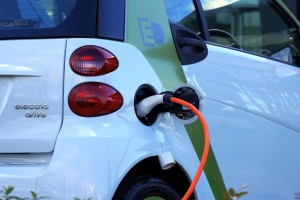Batteries buzz – how many hours do we need?
We all know the stress of seeing our phone battery icon go from a healthy green to red; usually while writing an email or halfway through a conference call. Imagine if that battery was powering an entire town or suburb. Batteries are providing a lot of solutions to smoothing out solar oversupply, but with a limited amount of megawatt hours, is it time we start looking to increase duration not just capacity?
Batteries seek to even out the peaks and the troughs that inevitably come with relying on renewables as an energy source. Batteries store solar when the sun in shining and then feed that back into the grid when the sun goes down and everyone comes home and turns on their lights and heaters and plugs in their electric cars.
Behind-the-meter domestic-scale batteries are becoming more and more popular, as the price and size has become more accessible to average household.
However large network-connected batteries can enable communities to access the benefits of having a battery and firming network reliability and stability without laying the initial expense at the feet of the customer.
A network battery can also be located where network issues are likely to arise, can be sized according to need and maintained by the network with more stringent maintenance regimes than perhaps the average household.
Large scale networks batteries also provide better value for money with domestic- scale batteries costing around six times more than a network battery.
But not all batteries are created equal.
Smoothing out the sun in the sunshine state.
Queensland are the next in line to introduce community batteries onto their grid. By installing five batteries at regional substations across the state, Queensland will be able to bank their excess power for use later on.
Queensland’s rate of solar penetration is impressive with one out of three houses installing roof tops solar panels. This is good news for the states 50 per cent renewable energy target by 2030 (currently sitting at about 20 per cent) and thus excellent news for the environment, but does leave the grid open to instability and overloading, which can then lead to blackouts.
The trial on the five new batteries will host a total of 40 MWh of storage between them and enable networks to stabiles the grid and improve reliability of energy flow.
ACT battery
Despite being our smallest territory, the ACT is making big moves towards it’s 100 per cent renewable energy target.
This year’s budget will offer a suite of measures that will enable the grid to transition to zero net emissions both in the home and across the network.
Along with zero interest loans to cover the cost of the installing rooftop solar and residential batteries, additional funding is committed to delivering a ‘Big Canberra Battery’ which will enable an impressive 250MW in battery capacity onto the grid from a range of different sized assets across the jurisdiction.
How long do they last?
Batteries are great and they are certain to play a key role – especially in sun drenched Australia – to harness renewable resources to power our homes, businesses and cars. To do that, however, these assets will need to deliver large scale ‘time shifting’ of electrons from when they are generated to when they are needed.
Since the first ‘big battery’ opened in 2017, a key feature of almost all the grid-scale batteries installed in Australia has been a focus on size and a lesser concern with duration. For example, the original Hornsdale Power Reserve had a capacity of 100MW but could only store 129MWh. This means that at capacity of 100MW, the full battery only held enough electrons to discharge for 77 minutes.
Even today, most big battery proposals tend to have durations of less than four hours.
Why does this matter?
To be fair, the Hornsdale battery and many others have performed impressively, especially in delivering ancillary services, in particular responding rapidly to system disturbances to keep the grid stable.
If batteries are going to be used to help replace Liddell and other coal-fired generators, longer duration batteries will be needed. If you want a solar + wind + battery combination to supply stable and reliable 24-hour electricity, it’s clear we’re going to need many batteries to be 8+ hours’ duration.
Until now, the revenues batteries have been earning have been overwhelmingly from ancillary services markets. So far, despite regular negative midday prices in some regions, it seems the average energy pool price differential has not been enough to drive investment in longer duration batteries.
Can better battery technology solve this? Or will pumped hydro, gas peakers and other solutions provide most of the long-duration storage the system will need in the decades ahead? Time will tell.

